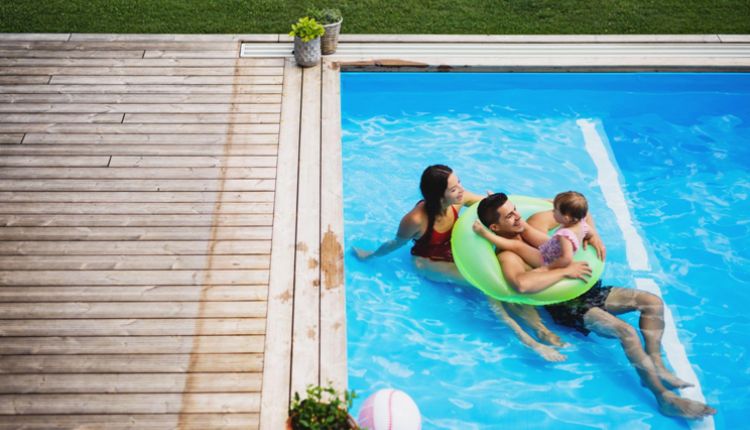If you’re picturing long afternoons in the water while the barbie sizzles nearby, you’re not alone. Backyard pools have become one of the most in-demand features for families across Sydney, especially with the hotter summers we’ve seen in recent years. But if you’re hoping to have yours ready in time for summer, you’ll need to start planning well before the weather turns warm.
What seems like a straightforward project quickly becomes a chain of decisions—some exciting, some tedious—that can affect everything from your budget to your final move-in swim date. The timeline is longer than most expect, especially once approvals and site prep come into play. A bit of upfront thinking now can save you weeks of delays later.
When planning your backyard pool, it’s essential to consider ongoing maintenance to ensure your pool remains a refreshing oasis throughout the summer. Engaging a reliable pool service can make a significant difference in maintaining water quality and equipment efficiency. Regular cleaning, chemical balancing, and equipment checks are crucial tasks that professionals can handle, allowing you to enjoy your pool without the hassle. Whether you’re in the initial planning stages or already have a pool, investing in a quality service will help extend the life of your pool and enhance your overall experience.
Think Beyond the Shape: Function Comes First
It’s easy to get swept up in the visual side of pool planning—sleek shapes, stone coping, blue mosaic tiles. But before you choose a design that looks good on Pinterest, it’s worth considering how your household will use the pool. A young family might need a shallow entry area for kids, while someone more focused on fitness might want space for lap swimming.
You’ll also want to consider how the pool fits into your daily routine during the summer. Is it for quick morning swims, weekend entertaining, or winding down after work? These small details can influence everything from depth to placement. Pools aren’t just static features—they’re interactive spaces. Planning for function early avoids the frustration of a beautiful layout that doesn’t suit your lifestyle once the novelty wears off.
The local climate also plays a role. In Sydney’s western and south-western suburbs, full sun exposure can overheat pool water during peak heatwaves, so shade planning matters as much as sun access. A good pool works with the seasons, not just the season it’s built for.
What to Expect When Working With a Local Pool Professional
Once you’ve mapped out how the pool will be used, the next step is speaking with someone who can translate those ideas into something buildable. That early consultation stage is where a lot of homeowners find out what’s possible—and what’s not—based on their block, soil type, and council requirements.
If you’re in Sydney’s southwest, working with a swimming pool builder Padstow locals already trust can make the process more predictable. Local builders tend to be familiar with the area’s quirks, such as which sites are more likely to require retaining walls, how lengthy approvals typically take with Canterbury-Bankstown Council, and where stormwater lines are likely to run. These aren’t things you want to discover halfway through the build.
Budgeting is another area where early conversations help. A good builder won’t just quote a hole in the ground; they’ll walk you through the full scope—filtration systems, fencing, paving, and even how to plan around future landscaping. That kind of context is hard to get from a glossy brochure or showroom floor. The clearer the conversation upfront, the smoother the project tends to run.
Council Approvals and Why They Can Delay Your Project
The enthusiasm that comes with planning a pool often hits a wall when it’s time to lodge approvals in areas like Padstow, pool installations typically require either a Development Application (DA) or a Complying Development Certificate (CDC). The process depends on factors such as lot size, zoning, and the proximity of the pool to property boundaries or existing structures.
Timeframes for approvals can vary wildly. Some CDCs are approved in a matter of weeks, while a complete DA process can stretch out for months, especially if supporting documents, such as drainage plans or engineering reports, are incomplete. What trips up many homeowners is not the complexity of the build, but the paperwork behind it.
If your block has large trees, sloped ground, or heritage considerations, you’ll likely need additional reports. Even pool fencing must meet specific height, gap, and gate compliance rules under NSW legislation, and many local councils will request detailed diagrams before sign-off. Engaging someone familiar with this process early—whether a designer, private certifier, or builder—can significantly speed things up.
Pool Positioning and Sunlight: What Most People Miss
Where you put your pool matters as much as what you put in it. Sunlight, shade, wind patterns, and even neighbour sightlines all play a part in how the space feels—and how much you’ll use it. Most people assume the sunniest part of the yard is the best spot, but that’s not always true. Without some natural or built-in shade, water temperatures can become uncomfortably high in summer, especially in full western sunlight.
In Sydney’s suburbs, a north-facing pool is often recommended because it gets consistent light throughout the day, but every site has its quirks. Nearby trees, boundary fences or a two-storey home can cast shadows that cool the water too quickly. It’s also worth noting how prevailing winds move across your yard. Strong breezes can drop water temperatures and make swimmers feel colder, even on warm days.
Then there’s the view from inside the house. A pool positioned where it can be seen from the kitchen or living room isn’t just more attractive—it’s also safer if you’ve got young kids. Balancing visual appeal with climate response is key. Ideally, the pool should be both a backyard feature and a functional space that responds well to your site conditions year-round.
Don’t Forget the Extras: Filtration, Heating and Fencing
It’s easy to focus on the shape and surface of the pool, but some of the most essential elements are the ones you can’t see. Filtration systems, for example, make the difference between sparkling clear water and an ongoing maintenance headache. The right system depends on your pool size, how often it’ll be used, and whether you’re dealing with leaf litter from nearby trees.
Heating is another cost that catches people off guard. While Sydney summers are warm, shoulder seasons can stretch your pool’s usability—if you’ve got a heat pump or solar system in place. Choosing the proper heating method depends on both budget and how frequently you plan to swim in cooler months.
Then there’s fencing, a non-negotiable in NSW. Compliance isn’t just about height or material—it also applies to gate closures, climbable objects nearby, and even the angle of vertical bars. It’s not uncommon for builds to stall at final inspection due to missed fencing details. Considering these extras early and allocating a budget for them from the start makes for a more realistic project scope.
Conclusion
There’s nothing quite like jumping into your own pool during the peak of summer—but getting there takes more than just enthusiasm and a shovel. With timelines stretching longer than most expect, especially in high-demand suburbs, the best time to start planning is now. Whether your goal is fitness, family fun or a low-fuss escape in the backyard, early preparation sets you up for a smoother build and a better summer.






